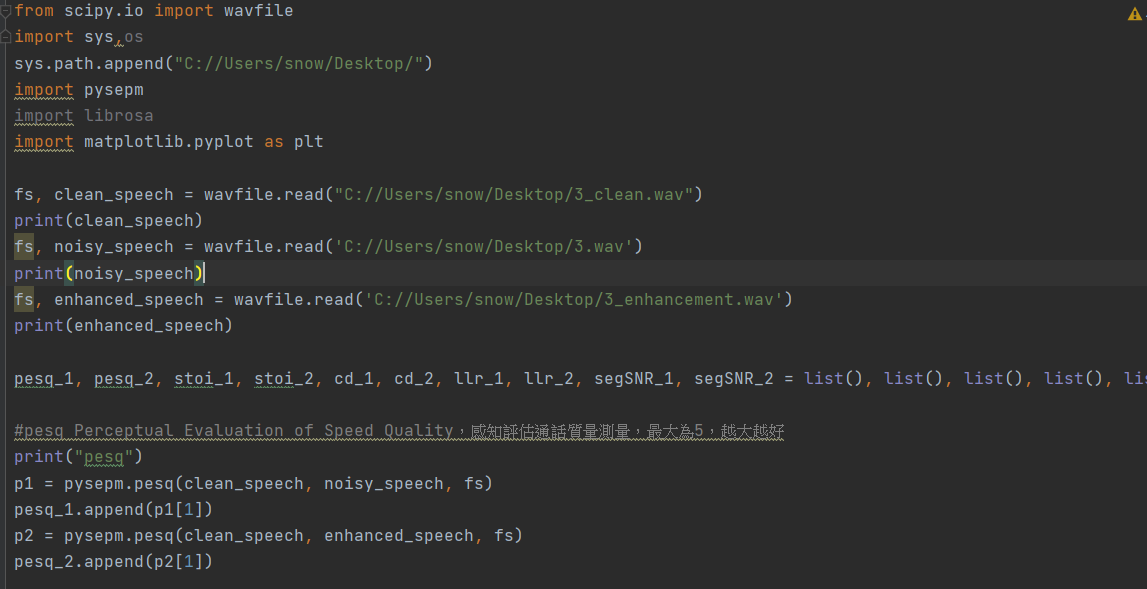Python implementation of objective quality and intelligibilty measures mentioned in Philipos C. Loizou's great Speech Enhancement Book. The Python implementations are checked with the MATLAB implementations attached to the book (see Link)
Install pysepm:
pip3 install https://github.com/schmiph2/pysepm/archive/master.zip
Please find a Jupyter Notebook with examples for all implemented measures in the examples folder.
- Segmental Signal-to-Noise Ratio (SNRseg)
- Frequency-weighted Segmental SNR (fwSNRseg)
- Log-likelihood Ratio (LLR)
- Weighted Spectral Slope (WSS)
- Perceptual Evaluation of Speech Quality (PESQ), (python-pesq implementation by ludlows)
- Composite Objective Speech Quality (composite)
- Cepstrum Distance Objective Speech Quality Measure (CD)
- Short-time objective intelligibility (STOI), (pystoi implementation by mpariente)
- Coherence and speech intelligibility index (CSII)
- Normalized-covariance measure (NCM)
- Bark spectral distortion (BSD)
- Scale-invariant signal to distortion ratio (SI-SDR)




